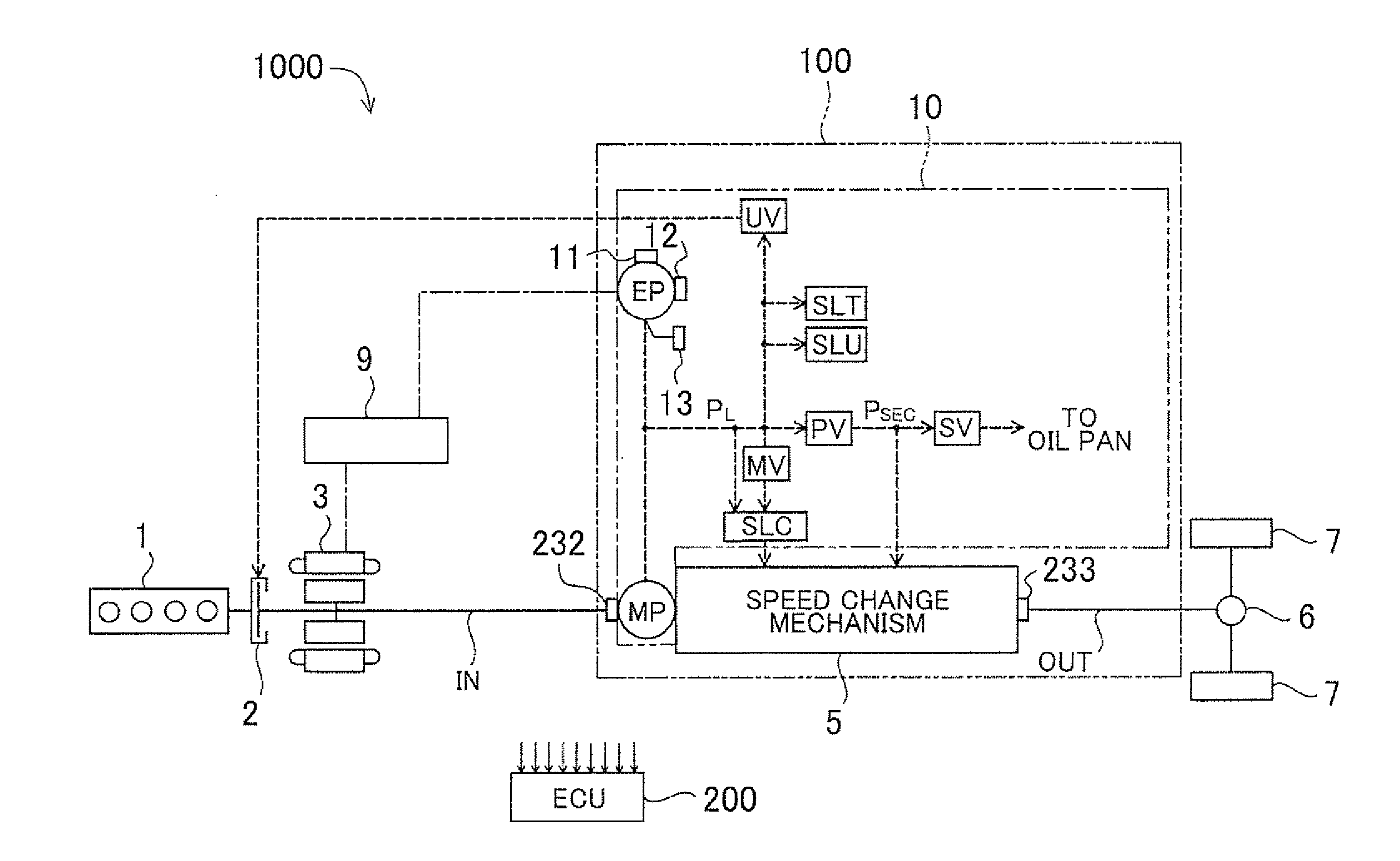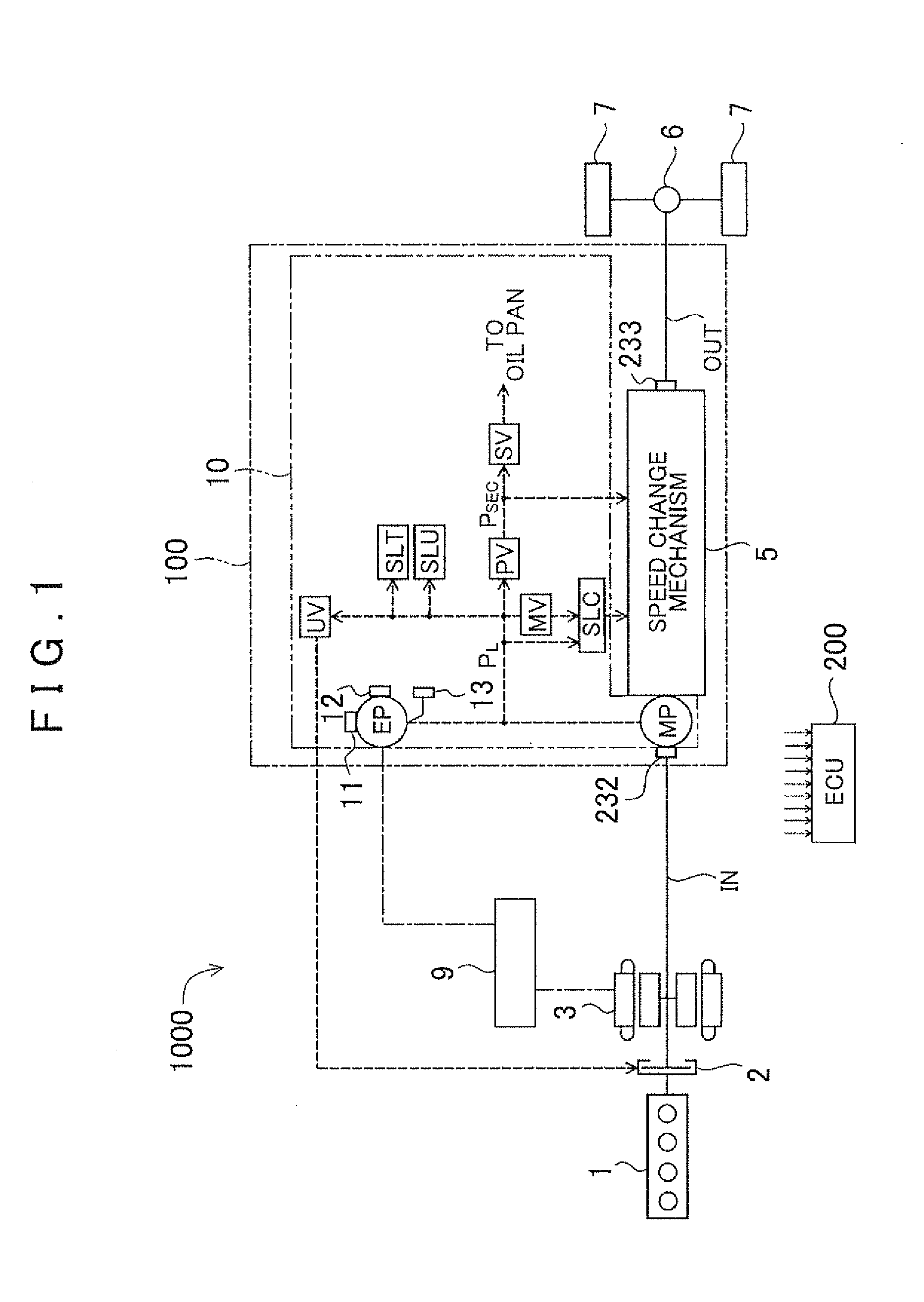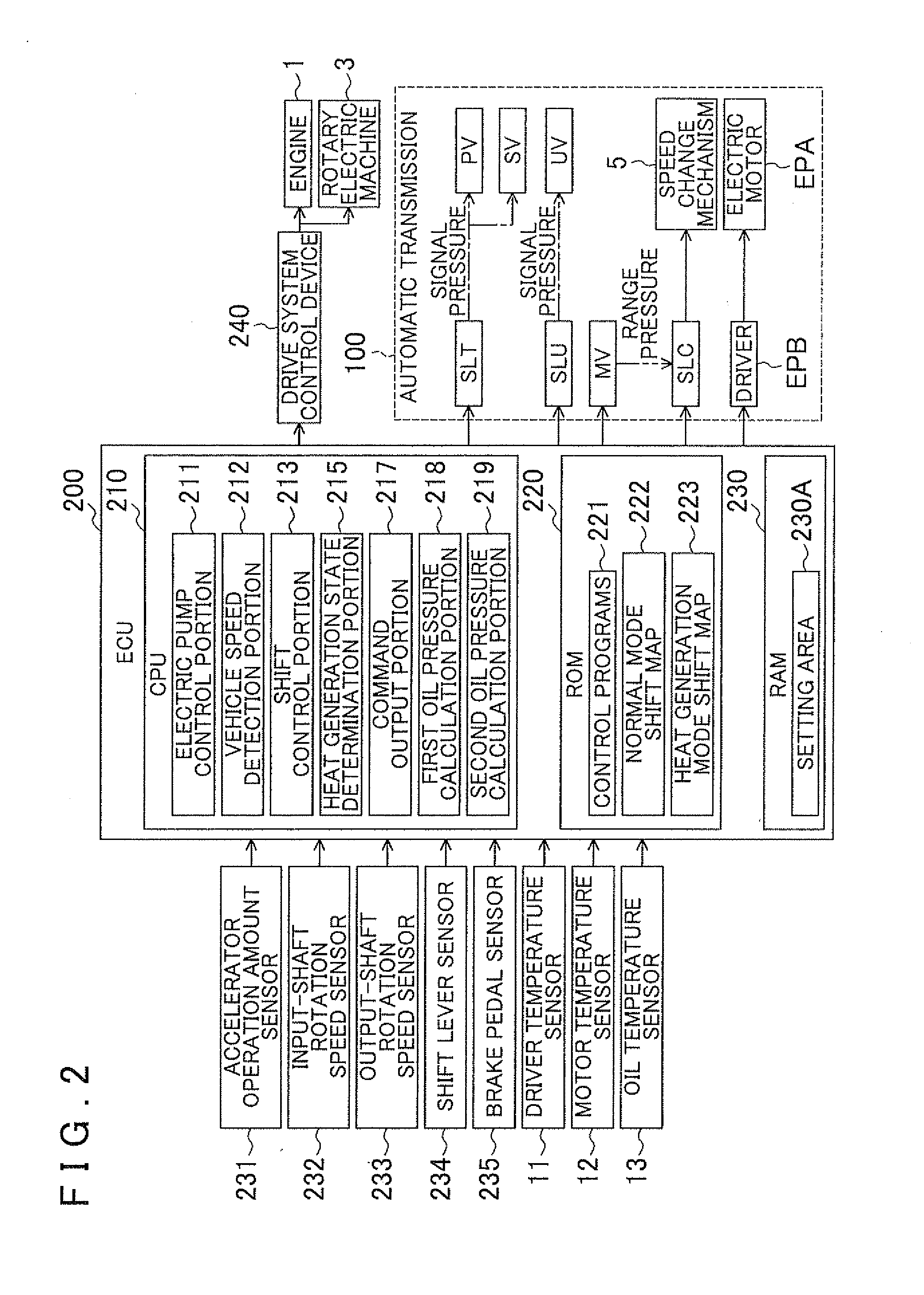Control device for automatic transmission
a control device and automatic transmission technology, applied in the direction of instruments, vehicle sub-unit features, transportation and packaging, etc., can solve the problems of giving an uncomfortable feeling to the driver of the vehicle, common problems such as the above, and achieve the effect of reducing the load on the electric pump assisting the mechanical pump, reducing the heat generation of the electric pump, and increasing the oil pressure generated by the mechanical pump
- Summary
- Abstract
- Description
- Claims
- Application Information
AI Technical Summary
Benefits of technology
Problems solved by technology
Method used
Image
Examples
first embodiment
A. First Embodiment
A1. Structure of Vehicle
[0048]FIG. 1 is a diagram schematically showing a structure of a vehicle 1000 as an embodiment of the present invention. In FIG. 1, structures related to the vehicle 1000 are selectively shown in order to avoid complications of the drawing. Incidentally, in FIG. 1, solid lines show transfer paths of drive force, and interrupted lines show supply paths of an operating oil ATF (Automatic Transmission Fluid), and a one-dot chain line shows electrical connection. FIG. 2 is a diagram showing functional blocks of an electronic control unit 200 (also termed the ECU (Electric Control Unit)).
[0049]The vehicle 1000 of this embodiment is a hybrid vehicle that uses an engine and a motor as drive force sources. This vehicle 1000, as shown in FIG. 1 or FIG. 2, is furnished with an engine 1, a transfer clutch 2, a rotary electric machine 3, a differential device 6, wheels 7, an electricity storage device 9, an input shaft IN, an output shaft OUT, an autom...
second embodiment
B. Second Embodiment
[0116]FIG. 8 is a diagram schematically showing a structure of a vehicle 1000A of a second embodiment. The vehicle 1000A of the second embodiment differs in structure from the vehicle 1000 of the first embodiment in having a transfer clutch 300. In the vehicle 1000A, the structures excluding the transfer clutch 300 are substantially the same as those of the first embodiment. In the vehicle 1000A, the same structures as those of the vehicle 1000 of the first embodiment are denoted by the same reference characters as used for the vehicle 1000, and the description thereof will be omitted.
[0117]In the vehicle 1000A, the transfer clutch 300 is disposed on an input shaft IN between a rotary electric machine 3 and a mechanical pump MP. The transfer clutch 300 is supplied with oil pressure transferred from a transfer clutch control valve (not shown) of an oil pressure control device 10, and is thereby controlled to an engaged state or a released state. The transfer clutc...
third embodiment
C. Third Embodiment
[0120]FIG. 9 is a diagram schematically showing a structure of a vehicle 1000B of a third embodiment. The vehicle 1000B of the third embodiment differs in structure from the vehicle 1000 of the first embodiment in having a torque converter 400. In the vehicle 1000B, the structures excluding the torque converter 400 are substantially the same as those of the vehicle 1000 of the first embodiment. In the vehicle 1000B, the same structures as those of the vehicle 1000 of the first embodiment are denoted by the same reference characters as used for the vehicle 1000, and the description thereof will be omitted.
[0121]In the vehicle 1000B, an input shaft IN is formed of an input shaft IN 1 and an input shaft IN2. The input shaft IN1 is linked to a rotary electric machine 3, and the input shaft IN2 is linked to a speed change mechanism 5.
[0122]The torque converter 400 is furnished with a pump impeller 42, a turbine runner 43, a stator 44, a one-way clutch 45, and a lockup ...
PUM
 Login to View More
Login to View More Abstract
Description
Claims
Application Information
 Login to View More
Login to View More - R&D
- Intellectual Property
- Life Sciences
- Materials
- Tech Scout
- Unparalleled Data Quality
- Higher Quality Content
- 60% Fewer Hallucinations
Browse by: Latest US Patents, China's latest patents, Technical Efficacy Thesaurus, Application Domain, Technology Topic, Popular Technical Reports.
© 2025 PatSnap. All rights reserved.Legal|Privacy policy|Modern Slavery Act Transparency Statement|Sitemap|About US| Contact US: help@patsnap.com



